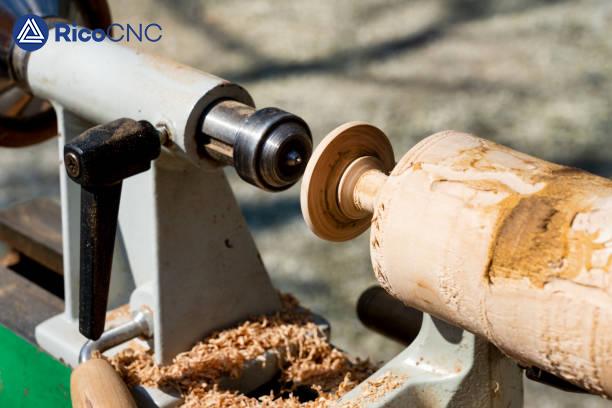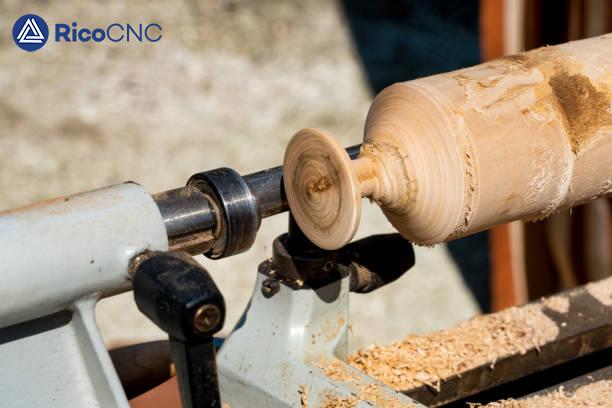In the world of machining, using the right tools for the job is key to achieving both precision and efficiency. For those venturing into CNC wood turning, a common question arises: Are https://www.cncsparetools.com/product/Polycrystalline-Diamond-Router-Bits-PCD-Cutting-Tools-for-CNC-Nesting.html good for CNC wood turning? Understanding the distinctions between these tools, and their suitability for different materials, can have a profound impact on your results. This article dives into the topic, providing detailed insights into whether or not metal lathe tools can be effectively used for CNC wood turning.

Metal lathe tools and wood lathe tools are designed with specific purposes in mind, and there are several differences that need to be taken into account when deciding whether to use metal tools for woodturning.
· Material Composition: Metal lathe tools are generally made from materials like high-speed steel (HSS), carbide, or cubic boron nitride (CBN). These materials are chosen because they can withstand the high temperatures and cutting forces generated during metal machining. In contrast, wood lathe tools are often made from high-carbon steel, as wood is much softer compared to metals and doesn't require as much hardness or heat resistance.
· Geometry: The cutting geometry of metal lathe tools is significantly different from that of wood lathe tools. Metal tools are designed to deal with high rigidity, requiring precise angles like cutting edge, rake, and relief angles to maintain optimal chip removal without excessive wear.
· Edge Sharpness: Wood lathe tools are generally sharper compared to their metal counterparts. This is because wood fibers require a slicing action to produce a clean cut, while metals need more controlled cutting due to their density.
Using metal tools for woodturning is possible, but it might not provide the best finish or efficiency unless adjustments are made to the cutting angles and speed settings. Metal tools tend to last longer because of their robust material, but the geometry and the lack of sharpness can be a limiting factor when working with wood.
While metal lathe tools aren't typically designed for wood, there are several benefits to using them, especially if certain adjustments are made. These advantages include their durability, availability, and ability to handle high-speed operations effectively.
· Durability: Tools made from carbide or HSS are more durable than standard wood lathe tools. They can be used for a longer period without needing to be resharpened as frequently. This makes them highly suitable for high-volume CNC wood turning.
· Versatility: Metal lathe tools can handle a wide range of cutting tasks. If you are working on a project that requires both wood and softer metals, these tools can be a versatile option without needing to change the tool between materials.
· Stability: Due to their high rigidity and strength, metal tools are stable and can resist deflection during cutting, which is important in CNC operations where precision is crucial.

Despite the benefits, there are also challenges when using metal lathe tools for CNC wood turning. These challenges arise from the fundamental differences between wood and metal machining.
Metal lathe tools are not as sharp as typical wood lathe tools. The sharpness of the tool is key to achieving a smooth surface finish on wood. Dull tools will crush the wood fibers instead of cutting them cleanly, leading to tear-outs and rough surfaces.
· Solution: To mitigate this, it's advisable to sharpen metal tools to a finer edge or even modify the cutting angles to better suit the characteristics of wood.
CNC wood turning usually involves higher cutting speeds compared to metal turning. Metal lathe tools are designed for slower speeds, where the heat resistance and toughness of the tool material are key. When used on wood, running these tools at typical wood speeds can lead to overheating or accelerated tool wear.
· Solution: Adjust the CNC lathe settings to match the capabilities of the tool. Typically, reducing the feed rate and increasing the rake angle can improve the cutting efficiency when using metal tools on wood.
Metal tools are built to withstand the high temperatures generated during metal cutting. However, during wood turning, this excess heat can cause burning or charring of the wood, particularly on softer woods that are more susceptible to high temperatures.
· Solution: To avoid overheating, it is crucial to keep the cutting edge sharp and adjust cutting speeds to ensure that heat generation remains minimal. Using tools with a coated cutting edge can also help reduce the heat build-up.
When using metal lathe tools for CNC wood turning, the choice of material is vital. Let’s explore the different materials and determine which one might be the best option for wood turning.
High-speed steel tools are the most commonly used for both metal and wood lathe applications. HSS is tough, holds a sharp edge, and is relatively easy to sharpen.
· Benefits: Affordable, holds an edge well, and can be easily sharpened to the desired level of sharpness needed for wood.
· Limitations: Prone to dulling more quickly than carbide when used on denser hardwoods.
Carbide-tipped tools are known for their superior hardness and wear resistance, which makes them excellent for both wood and metal applications. These tools are particularly popular in CNC setups due to their long lifespan and ability to withstand aggressive cutting conditions.
· Benefits: Long-lasting, provides a very fine surface finish, and ideal for high-volume operations.
· Limitations: Not as easy to sharpen as HSS, and might need specialized equipment.

CBN tools are often used for very hard materials but can also be used for wood in some applications where extremely high resistance to wear is required.
· Benefits: Highly resistant to wear, suitable for specific applications where long tool life is desired.
· Limitations: Very expensive and not generally required for soft materials like wood.
If you decide to use metal lathe tools for CNC wood turning, there are practical tips that can help you get the best results:
1. Sharpen the Cutting Edge: Ensure that the cutting edge is sharpened to a finer angle to slice through wood fibers cleanly.
2. Adjust Rake and Relief Angles: Modify the rake and relief angles to better suit wood. A larger rake angle can make cutting easier, while an appropriate relief angle reduces friction.
3. Speed and Feed Rates: Use higher speeds and lower feed rates to avoid charring the wood and to achieve a smooth surface finish.
4. Use Carbide Inserts: When working on dense woods, use carbide inserts for longer-lasting sharpness and reduced downtime.
By making these adjustments, metal lathe tools can indeed be used effectively for wood turning, especially in CNC setups where precision and automation are critical.
Yes, metal lathe tools can be used for wood turning, but they may require adjustments to angles and sharpness to achieve optimal performance.
Carbide tools are highly durable, provide an excellent surface finish, and require less frequent sharpening, making them ideal for CNC wood turning.
High-speed steel (HSS) is suitable for CNC wood turning, especially for soft woods. HSS tools are cost-effective and can be easily sharpened to maintain cutting performance.
To avoid overheating, ensure the cutting edge is sharp, reduce the feed rate, and select appropriate cutting speeds. Using tools with coated cutting edges also helps.
It depends on the tool material and the type of wood. Carbide tools need less frequent sharpening, while HSS may require more regular maintenance to retain sharpness.
CBN tools are highly resistant to wear but are generally not necessary for wood, as they are more suited for very hard materials.

So, are metal lathe tools good for CNC wood turning? The answer is nuanced. While metal lathe tools like high-speed steel and carbide can be effectively used for wood turning, they require certain modifications to ensure optimal performance. Factors such as tool geometry, sharpness, and cutting speed need to be adjusted to suit the characteristics of wood. The choice between HSS, carbide, and CBN will depend on the specific requirements of your operation, including tool life, surface finish, and cost considerations.
If you're considering enhancing your CNC wood turning setup with durable, versatile tools and need more automation components, RC-V wood lathe tools, RC-X wood lathe tool, 3in1 wood lathe tools, 2 in1 wood lathe tool even scarpers in woodturning industry for innovative solutions that can further optimize your machining process.
Contact: RicoCNC
Phone: 0086-13390848665
Tel: 0086-51268235075
Email: cncsale@ricocnc.com
Add: NO. 60, Weixin Road, Industrial Park, Suzhou, Jiangsu, China, 215000
 online service
online service 0086-15264185266
0086-15264185266 cncsale@ricocnc.com
cncsale@ricocnc.com